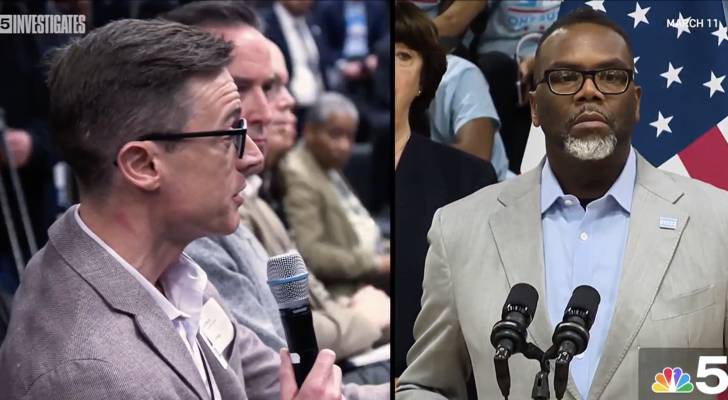
What do you do if your city promises to pay you, but fails to do so? That’s precisely what happened to the owners of a vacant lot in Brighton Park, a neighborhood in Chicago.
NBC 5 reports that Barnacres Corporation filed a lawsuit against the City of Chicago in 2024 for a breach of contract. The city allegedly failed to pay monthly lease payments to use the land it had intended to place thousands of migrants in winterized tents.
The lawsuit settlement was finalized in early April this year at a significant cost to Chicago taxpayers. So what happened, and how much are taxpayers on the hook for?
Don’t miss
- I’m 49 years old and have nothing saved for retirement — what should I do? Don’t panic. Here are 5 of the easiest ways you can catch up (and fast)
- Thanks to Jeff Bezos, you can now become a landlord for as little as $100 — and no, you don’t have to deal with tenants or fix freezers. Here’s how
- Gain potential quarterly income through this $1B private real estate fund — even if you’re not a millionaire. Here’s how to get started with as little as $10
How much did the City of Chicago pay Barnacres Corporation?
Including the $816,506.67 settlement and the nearly $1 million already spent getting the land ready to house migrants, the City of Chicago will pay over $1.8 million — all set to come from taxpayer dollars. The original lease was for the City of Chicago to rent the vacant lot for $91,400 per month.
Neither the City of Chicago nor Barnacres Corporation admitted any fault or liability in the settlement.
However, the city has agreed to build a wheelchair ramp on a warehouse on the vacant lot and cap off water and sewer lines added previously to anticipate housing migrants.
Why did the plan to house migrants in Brighton Park fall through?
The vacant lot was meant to house around 2,000 migrants to help curb some of the crisis caused partly by an influx of asylum-seekers settling in Chicago. According to the City of Chicago official government website, that’s “over 51,000 new arrivals from the southern border,” between August 31, 2022 and December 18, 2024 alone.
However, the Illinois Environmental Protection Agency (EPA) scrapped the city’s plans following an 800-page report outlining the land’s condition, including excessive levels of toxic metals and mercury in the soil and air around the lot. This was even after attempts to remediate some of the environmental concerns.
Anthony Moser, a member of FOIA Bakery, an advocacy group, told reporters at NBC 5 that at the very least, the report highlighted the environmental issues that exist in the neighborhood. He added that there may have been “people who had been living here already and didn’t really understand some of the risks that they might be facing.”
Read more: Want an extra $1,300,000 when you retire? Dave Ramsey says this 7-step plan ‘works every single time’ to kill debt, get rich in America — and that ‘anyone’ can do it
Despite the scrapped plans, the City of Chicago is seeking ways to combat the continuing challenges with housing migrants.
In late 2024, Chicago announced its plans to unify its system for migrants with its homeless shelter system, as the process to house asylum seekers was set to end in December. Called the One System Initiative (OSI), Mayor Brandon Johnson stated this initiative is intended to help everyone who needs assistance in the City of Chicago.
However, these shelters may already be at capacity, furthering the need for winterized tents. Last year’s data by the Chicago Coalition to End Homelessness (CCH) found that over 68,000 residents were experiencing homelessness — this is roughly 2.55% of the population, according to the 2023 Census data for Chicago. By contrast, around 37,000 accessed services for the homeless (about 1.4% of the population).
These numbers don’t include the large number of migrants arriving in the city.
Now that the vacant lot project has been scrapped, it’s unclear what future plans exist for the area or those seeking shelter. In the meantime, taxpayers must pay for what some deemed a controversial project to begin with.
What to read next
- Don’t have the cash to pay Uncle Sam in 2025? You may already be eligible for a ‘streamlined’ handshake with the IRS — here’s how it works and how it can potentially save you thousands
- Here are 5 ‘must have’ items that Americans (almost) always overpay for — and very quickly regret. How many are hurting you?
- Robert Kiyosaki warns of a ‘Greater Depression’ coming to the US — with millions of Americans going poor. But he says these 2 ‘easy-money’ assets will bring in great wealth. How to get in now
This article provides information only and should not be construed as advice. It is provided without warranty of any kind.